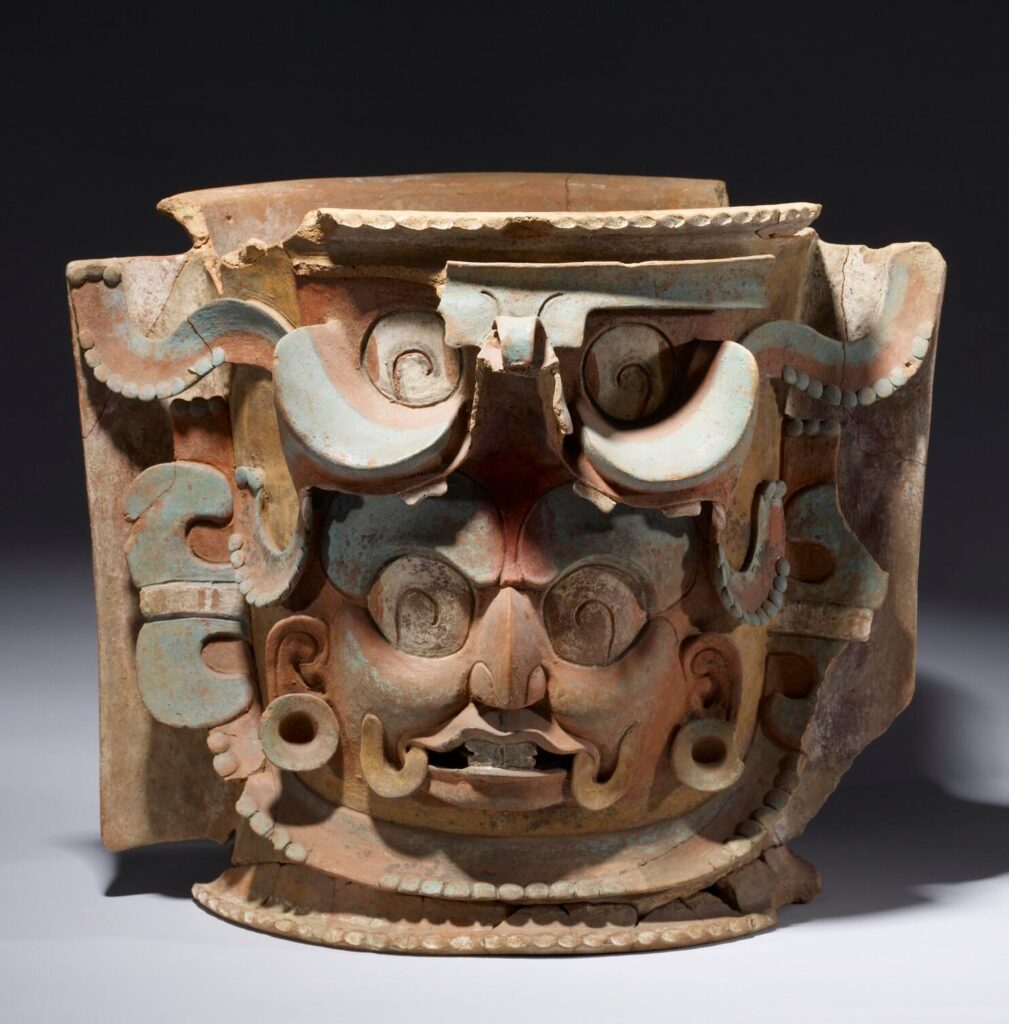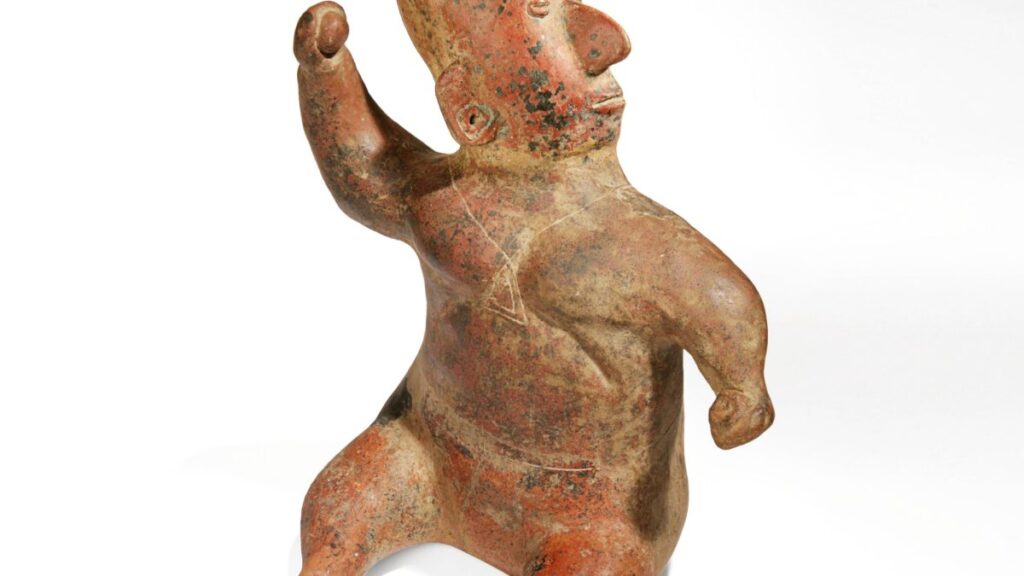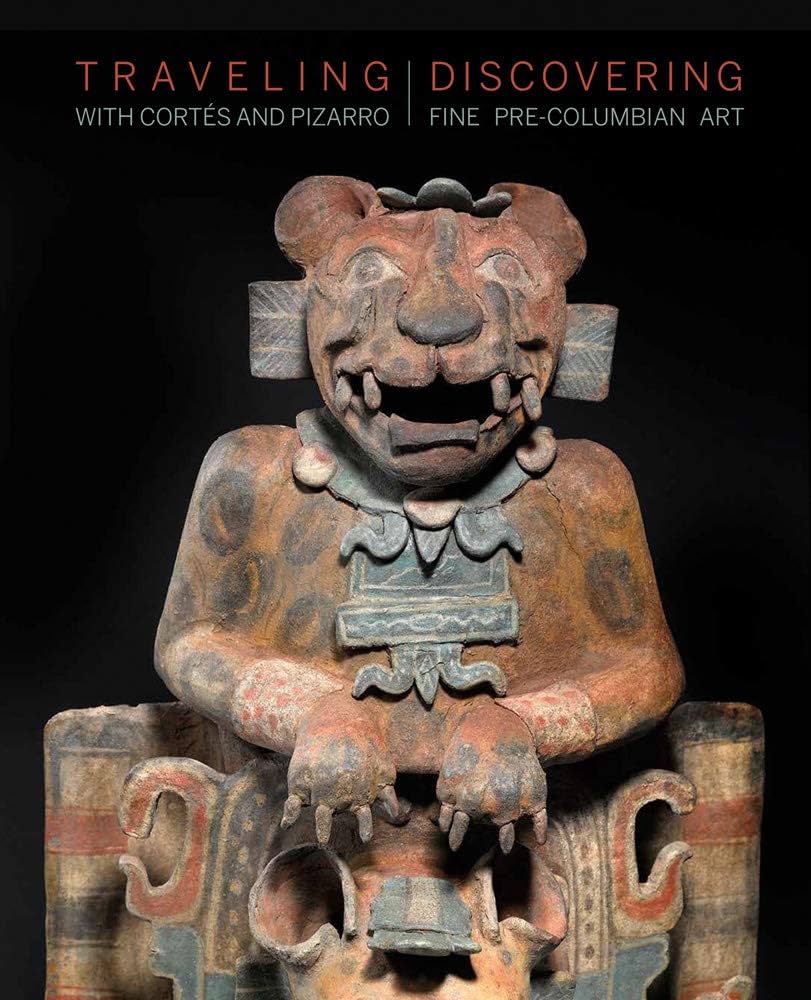So, have you ever wondered about the fascinating art that was created in Mexico before the arrival of the Europeans? Well, you’re in for a treat because today we’re going to explore the rich world of Pre-Colombian art in Mexico. Get ready to be amazed by the masterpieces that were created by ancient civilizations such as the Aztecs, Maya, and Olmecs.
When you think of Mexico, the first things that probably come to mind are its stunning beaches, exciting attractions, and luxurious hotels. But did you know that Mexico is also home to a diverse and vibrant art scene that dates back thousands of years? From intricate pottery and sculptures to intricate murals and paintings, the Pre-Colombian artists of Mexico were true masters of their craft.
In this article, we’ll delve into the different types of Pre-Colombian art found in Mexico and learn about the symbolism and techniques used by these ancient artists. We’ll also take a closer look at some of the most famous archaeological sites in Mexico where you can witness these incredible artworks firsthand. So, whether you’re planning a trip to Mexico or simply have a keen interest in art history, get ready to dive into the world of Pre-Colombian art and discover the awe-inspiring beauty that lies within.

Introduction
Mexico, a land rich in culture and history, is home to a remarkable collection of Pre-Colombian art. These artistic masterpieces, created by the indigenous civilizations that thrived in the region before European colonization, offer a glimpse into a vibrant and ancient world. From the magnificent stone sculptures to intricate wall paintings, each piece tells a story of the past, captivating the imagination of art enthusiasts and historians alike.
The Significance of Pre-Colombian Art in Mexico
Historical context
To truly appreciate the significance of Pre-Colombian art in Mexico, it is essential to understand its historical context. Before the Spanish conquest, Mexico was inhabited by several advanced civilizations, including the Olmec, Maya, Aztec, and Toltec. These civilizations flourished for thousands of years, leaving behind a rich artistic legacy that continues to inspire and captivate us today.
Cultural importance
Pre-Colombian art is not only aesthetically pleasing; it also holds immense cultural importance. It reflects the beliefs, traditions, and values of the indigenous peoples who created it. Through their artwork, they sought to communicate their understanding of the world, their mythology, and their devotion to their deities. It serves as a tangible link to their past, allowing us to gain insight into their way of life and their contribution to the development of civilization.
Artistic achievements
The artistic achievements of the Pre-Colombian civilizations are nothing short of remarkable. Despite the limited technology and resources available to them, these ancient artists demonstrated extraordinary skill and creativity. From the colossal stone heads crafted by the Olmec to the intricate jade carvings of the Maya, their craftsmanship and attention to detail continue to astound us.

Distinctive Artistic Styles
Olmec civilization art
The Olmec civilization, considered the “mother culture” of Mesoamerica, produced some of the earliest known Pre-Colombian art in Mexico. They are renowned for their colossal stone heads, which depict human faces and represent their rulers or deities. These artworks, carved with precision and finesse, showcase the Olmec’s mastery of sculpting.
Mayan civilization art
The Mayan civilization is revered for its complex and elaborate art. Their artistic achievements encompassed various mediums, including stone, pottery, and textiles. Mayan artwork often depicted scenes from mythology, including gods, goddesses, and sacred rituals. The intricacy of their carvings and the vibrant colors used in their paintings demonstrate the Mayan’s remarkable artistic capabilities.
Aztec civilization art
The Aztec civilization, known for its powerful empire and militaristic society, also left a significant artistic legacy. Aztec art is characterized by its bold and dynamic style, often portraying warriors, deities, and symbols of power. Their prized creations include intricate featherwork, gold jewelry, and stone sculptures, which showcase their craftsmanship and attention to detail.
Toltec civilization art
The Toltec civilization, known for its influence on subsequent Mesoamerican cultures, also made significant contributions to Pre-Colombian art. Their artwork often featured symbols of war, sacrifice, and gods associated with fertility and creation. The Toltec’s mastery of stone sculpture and their ability to create awe-inspiring murals exemplify their artistic achievements.
Materials and Techniques Used
Obsidian sculpting
One of the notable materials used in Pre-Colombian art is obsidian, a volcanic glass prized for its sharpness. The skillful sculpting and shaping of this material by ancient artisans resulted in intricate and finely detailed pieces. Obsidian was used to create various objects, including religious talismans, figurines, and ceremonial weapons.
Jade carvings
Jade, a precious green stone revered by the Pre-Colombian civilizations, was often carved into intricate designs and used to create stunning jewelry and ceremonial objects. The Mayans, in particular, were renowned for their jade craftsmanship, utilizing the stone’s vibrant green hues to represent life, fertility, and prosperity.
Pottery and ceramics
The Pre-Colombian civilizations excelled in pottery and ceramics, creating vessels, sculptures, and figurines that showcased their technical skill and artistic flair. Each piece was handcrafted using clay and decorated with intricate designs, including representations of gods, animals, and geometric patterns. Some pottery even featured vibrant polychrome glazes, displaying the mastery of color by ancient artisans.
Mosaic work
Mosaic work was another technique utilized by the ancient civilizations of Mexico. These intricate designs, composed of carefully arranged small pieces of stone, shell, or other materials, adorned buildings, sculptures, and jewelry. Mosaic work allowed for intricate designs and the use of vibrant colors, resulting in visually stunning and eye-catching creations.

Themes and Subjects Explored
Mythology and deities
Pre-Colombian art often revolved around mythology and deities, serving as a way to honor and communicate with the gods. Sculptures, paintings, and carvings depicted various gods and goddesses, each possessing unique attributes and symbolism. These artworks shed light on the complex belief systems and religious practices of the ancient civilizations.
Nature and wildlife
The natural world played a significant role in the art of the Pre-Colombian civilizations. Artists frequently depicted animals, plants, and landscapes, emphasizing the interconnectedness between humans and the environment. The intricate details and lifelike representations of animals in Pre-Colombian art reflect the reverence and respect that ancient societies had for nature.
Human figures and portraits
Portraiture was also a popular subject in Pre-Colombian art. Ancient artists skillfully captured the human form, often depicting rulers, nobles, or warriors. These portraits, with their meticulous attention to detail, provide valuable insights into the physical appearance and social hierarchy of the time.
Rituals and ceremonies
Artwork depicting rituals and ceremonies was particularly significant in Pre-Colombian societies. These visual representations provided a means of documenting and commemorating important events and religious practices. From elaborate murals to intricate codices, these artworks served to preserve the traditions and customs of the civilizations that created them.
Artifacts and Artwork Examples
Pre-Colombian art is represented by a vast collection of artifacts and artwork, each offering a unique perspective on the rich cultural heritage of Mexico.
Stone sculptures
The stone sculptures of the Pre-Colombian civilizations stand as enduring symbols of their artistic prowess and cultural achievements. From the colossal heads of the Olmec to the intricate carvings of the Maya, each piece tells a story of a bygone era. These sculptures can be seen in museums and archaeological sites across Mexico, captivating visitors with their beauty and historical significance.
Wall paintings and murals
The walls of ancient structures were often adorned with vibrant and intricately painted murals. These paintings provided a visual representation of the myths, stories, and historical events of the civilizations that created them. The vibrant colors and meticulous details of these murals paint a vivid picture of the life and beliefs of the ancient peoples.
Codices and manuscripts
The Pre-Colombian civilizations were skilled in creating delicate codices and manuscripts, which served as records of their history, mythology, and astronomical knowledge. These manuscripts, often written and illustrated using vibrant pigments on amate bark paper, provide valuable insights into the worldview and intellectual pursuits of the ancient societies.
Jewelry and adornments
The ancient civilizations of Mexico had a profound appreciation for beauty, as evidenced by their intricate jewelry and adornments. Gold, jade, and other precious materials were expertly crafted into stunning pieces, worn as status symbols or used in religious ceremonies. These pieces serve as a testament to the ancient artisan’s skill and their appreciation for fine craftsmanship.

Archaeological Sites and Museums
Mexico is home to numerous archaeological sites and museums where one can immerse themselves in the rich history and art of the Pre-Colombian civilizations.
Teotihuacan
Teotihuacan, located just outside of Mexico City, is an impressive archaeological site that was once one of the largest and most influential cities in Mesoamerica. Visitors can explore its iconic structures, such as the Pyramid of the Sun and the Pyramid of the Moon, which are adorned with stunning murals and sculptures.
Palenque
Nestled amidst the lush jungle of Chiapas, Palenque boasts beautifully preserved Mayan ruins. The site is renowned for its intricate carvings and impressive architecture, including the Temple of the Inscriptions, which houses the tomb of the famous Mayan ruler, Pacal the Great.
Chichen Itza
Chichen Itza, a UNESCO World Heritage site, is one of the most iconic archaeological sites in Mexico. This ancient Mayan city features structures such as the Pyramid of Kukulcan and the Temple of Warriors, showcasing the architectural brilliance and artistic mastery of the Mayan civilization.
National Museum of Anthropology
Located in Mexico City, the National Museum of Anthropology is a treasure trove of Pre-Colombian art and artifacts. Its extensive collection includes intricate sculptures, exquisite jewelry, and meticulously preserved codices, providing visitors with a comprehensive understanding of Mexico’s rich cultural heritage.
Preservation and Restoration Efforts
Preserving and restoring Pre-Colombian art poses unique challenges due to the age and fragility of these artifacts. However, dedicated individuals and organizations have made significant strides in conservation efforts.
Challenges faced
One of the major challenges in preserving Pre-Colombian art is the deterioration of materials over time. Fragile textiles, delicate mural paintings, and decaying organic materials all require specialized techniques and expertise to halt the decay process. Additionally, looting and illegal trade pose threats to the integrity and preservation of these artifacts.
Conservation techniques
Conservation techniques employed by experts include careful cleaning, stabilizing fragile surfaces, and creating controlled environments to protect the artifacts from humidity and temperature fluctuations. Advanced imaging technologies and scientific analysis are also used to understand the materials and techniques used by ancient artists.
Collaborative projects
Preservation efforts are often collaborative endeavors that involve local communities, archaeologists, art historians, and international organizations. These collaborations help ensure the longevity of these artifacts while also fostering a sense of ownership and pride among the communities in which they are found.

Impact on Contemporary Mexican Art
The influence of Pre-Colombian art is not limited to the past; it continues to shape and inspire contemporary Mexican artists.
Influence on modern artists
Many modern Mexican artists draw inspiration from the aesthetics, symbolism, and techniques of Pre-Colombian art. The vibrant colors, geometric patterns, and spiritual undertones have found their way into modern paintings, sculptures, and installations, creating a visual dialogue between the past and the present.
Continuation of traditional techniques
Some artists, particularly those from indigenous communities, continue to use traditional techniques passed down through generations. These techniques, such as textile weaving, pottery making, and stone carving, serve as a means of preserving cultural heritage while also adding a contemporary twist to traditional practices.
Incorporation in contemporary artworks
The incorporation of Pre-Colombian themes and motifs in contemporary artworks helps perpetuate the cultural legacy of these ancient civilizations. By blending the traditional with the modern, artists are able to connect with their cultural roots while also addressing contemporary issues and concerns.
Appreciating Pre-Colombian Art
To fully appreciate the beauty and significance of Pre-Colombian art, there are several ways to engage with these masterpieces.
Visiting exhibitions and galleries
Many museums and galleries around the world hold exhibitions dedicated to Pre-Colombian art. These exhibitions provide an opportunity to immerse oneself in the visual splendor of the ancient civilizations and gain a deeper understanding of their cultural and artistic achievements.
Understanding cultural context
To truly appreciate Pre-Colombian art, it is essential to understand the historical and cultural context in which these artworks were created. Learning about the mythology, beliefs, and daily life of the ancient civilizations enhances our appreciation and allows us to connect on a deeper level with the art and the people who created it.
Collecting and preserving artifacts
While acquiring Pre-Colombian artifacts for personal collections is limited to a select few, supporting ethical and legal purchasing practices can help preserve and protect these precious pieces. Additionally, supporting museums and institutions dedicated to the conservation and research of Pre-Colombian art ensures that these artifacts remain accessible to future generations.
Critiques and Controversies
As with any form of art, Pre-Colombian art is not exempt from critiques and controversies.
Cultural appropriation debates
The display and interpretation of Pre-Colombian art by non-indigenous individuals and institutions have led to debates about cultural appropriation. These debates center around issues of ownership, representation, and the responsible presentation of the art and artifacts within a contemporary context.
Repatriation of stolen artifacts
The repatriation of stolen artifacts is an ongoing issue in the field of Pre-Colombian art. Many priceless artworks were looted during the Spanish conquest and subsequent colonization. Efforts are being made to return these treasures to their countries of origin, allowing their rightful owners to reclaim their cultural heritage.
Authenticity and forgeries
The commercial market for Pre-Colombian artifacts has led to the creation of numerous forgeries, making it difficult to determine the authenticity of certain pieces. Scholars and experts work tirelessly to authenticate artworks, employing various scientific methods and scrutinizing historical records to safeguard the integrity of Pre-Colombian art.
Revitalizing Indigenous Art Forms
Supporting indigenous artists and revitalizing traditional art forms is crucial in preserving the cultural heritage of Mexico.
Supporting indigenous artists
Supporting indigenous artists not only enables them to continue practicing their art but also helps sustain their communities. Purchasing artwork directly from indigenous artists ensures that they receive fair compensation for their talent and labor, strengthening their economic and cultural well-being.
Reviving traditional techniques
Efforts are being made to revive traditional art forms and techniques that have been lost over time. By providing resources and training, initiatives are empowering indigenous communities to reclaim and revive their artistic practices. This revitalization ensures that these unique art forms are preserved and passed down to future generations.
Preserving cultural heritage
Preserving the cultural heritage of Mexico’s indigenous communities is of utmost importance. By documenting oral histories, archiving traditional knowledge, and promoting cultural education, initiatives are ensuring that these art forms and the stories they tell remain alive and accessible for generations to come.
Global Impact of Pre-Colombian Art
Pre-Colombian art has had a profound global impact, influencing artists, collectors, and educators across the world.
International exhibitions
Pre-Colombian art exhibitions are held in major cities and museums worldwide, allowing people from diverse backgrounds to appreciate and learn from these ancient masterpieces. These exhibitions foster cross-cultural exchange and contribute to a broader understanding of the rich cultural heritage of Mexico.
Art market and collectors
The growing interest in Pre-Colombian art has led to a thriving market, with collectors seeking to own these priceless artifacts. However, ethical collecting practices are essential to ensure that these pieces are sourced legally and responsibly, safeguarding the integrity and cultural significance of these artworks.
Educational resources
Educational resources, such as books, documentaries, and online platforms, play a crucial role in disseminating knowledge about Pre-Colombian art. By making this information readily accessible, these resources facilitate a deeper understanding and appreciation of the art and its historical context, even for those unable to physically visit museums or archaeological sites.
Conclusion
Pre-Colombian art holds immense historical, cultural, and artistic value, offering a window into the ancient civilizations that once thrived in Mexico. From the skillfully carved stone sculptures to the vibrant murals, each piece serves as a testament to the ingenuity and creativity of these ancient artists. Through appreciating and preserving this rich artistic heritage, we can forge a deeper connection with the past, honoring the contributions of those who came before us and continuing to draw inspiration from their remarkable achievements.